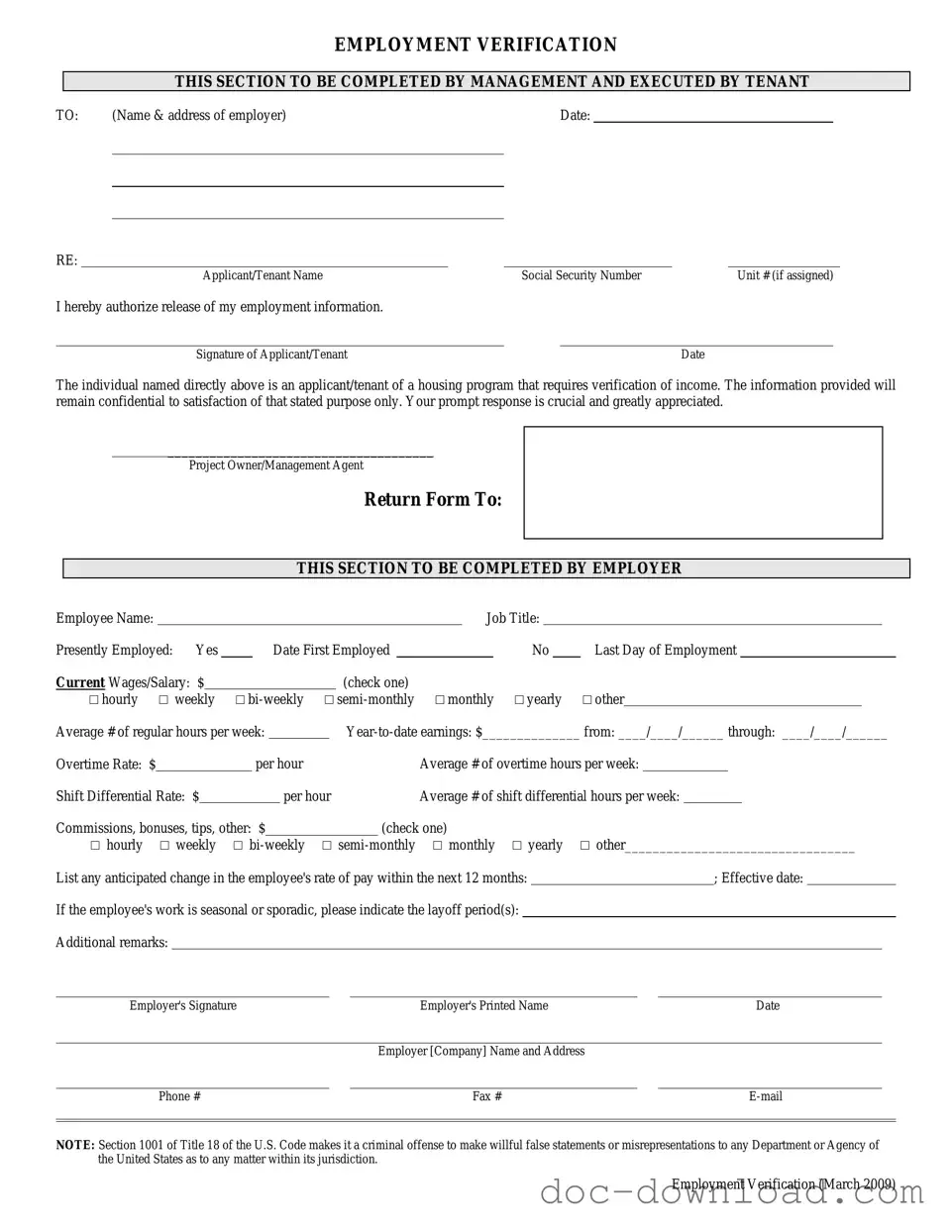The first document similar to the Employment Verification Form is the Pay Stub. A pay stub provides proof of employment and details about an employee's earnings. It typically includes information such as the employee's name, the employer's name, pay period, and gross and net pay. Like the Employment Verification Form, a pay stub serves as a reliable source to confirm an individual's employment status and income, which can be crucial for loan applications or rental agreements.
Another comparable document is the Offer Letter. An offer letter is issued by an employer to a candidate who has been selected for a position. This document outlines the terms of employment, including job title, salary, and start date. Similar to the Employment Verification Form, the offer letter validates that an individual is employed and provides essential details that may be required for background checks or other verification processes.
In addition to these documents, employees may also want to keep a close eye on their earnings through the Adp Pay Stub form, which provides a detailed account of their pay, including gross earnings, deductions, and net income for each pay period. Understanding this form is crucial for ensuring that employees are correctly compensated and aware of their financial standing.
The W-2 Form is also akin to the Employment Verification Form. This document is provided by employers to their employees at the end of the tax year and details the employee's annual earnings and tax withholdings. Like the Employment Verification Form, the W-2 serves as official proof of employment and income, which is often requested by financial institutions when applying for loans or mortgages.
A Job Reference Letter is another document that shares similarities with the Employment Verification Form. This letter is written by a previous employer or supervisor to endorse an employee's skills and work ethic. While the Employment Verification Form confirms employment status, the Job Reference Letter provides additional context about an individual's performance and character, which can be beneficial for job seekers.
The Employment History Report is also closely related. This report provides a detailed account of an individual's past employment, including job titles, dates of employment, and responsibilities. It functions similarly to the Employment Verification Form by confirming the individual's work history, which may be required during background checks or when applying for new positions.
Lastly, the Background Check Report is another document that parallels the Employment Verification Form. This report includes various aspects of an individual’s history, including employment verification, criminal records, and credit history. Like the Employment Verification Form, it serves to confirm an individual’s qualifications and reliability, often being a crucial part of the hiring process or loan approvals.

